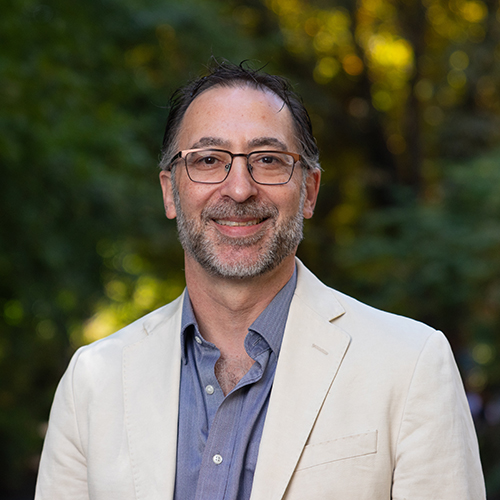If you want something done efficiently, find an enzyme to do it.
Enzymes are nature’s machinery for building and breaking down molecules. They build structures like hair and break down food. “They can do this with a level of efficiency and exactness that is really amazing,” says Forrest Michael, assistant professor of chemistry.
Scientists would love to harness those qualities for use in manufacturing and other situations where current chemical approaches lead to unwanted and sometimes toxic byproducts. Problem is, enzymes found in nature only work on natural substances, not man-made ones. Scientists have long dreamed of creating artificial enzymes, but the challenges have seemed insurmountable—until now.

A team of UW scientists recently created one of the first artificial enzymes from scratch, a milestone they described in the journal Science. The team includes Michael Gelb and Forrest Michael from the Department of Chemistry, biochemistry professor David Baker, and current and former PhD students Justin Siegel, Alex Zanghellini, and Helena Lovick.
“Our enzyme is slow, but it works well enough to get people excited about it,” says Gelb. “It’s not bad for the first time. Now we’ll experiment with it to learn how to make better enzymes.”
Gelb explains that enzymes serve as templates for chemical reactions. Each enzyme is designed to bring selected molecules together, guiding the molecules so that they fit together on the surface of the enzyme. Think of the enzyme as a lock and the two molecules as two halves of a key that fits that specific lock. “Without an enzyme, molecules tend to bounce off each other,” he says. “Things tend to react chaotically if not guided by enzymes.”
The challenge in creating an artificial enzyme is to identify the shape of the lock needed to fit specific molecules. With a nearly infinite number of possibilities, such an undertaking has long been viewed as a needle-in-the-haystack endeavor. But thanks to a computer program developed by Baker, it is now possible to winnow the options to a manageable few.

To create their enzyme, the team chose a fairly simple chemical reaction—one for which an enzyme does not yet exist—and fed the computer information about the molecules involved. The computer program then sifted through billions of possibilities to identify 84 enzyme “shapes” that would be most likely to create that reaction. The team built those 84 enzymes and tested them. They found two that worked and fine-tuned them to increase the speed of the reaction. “There is still an element of trial and error that goes along with the design,” says Michael, “but the computer got us close. Without it, we never would have gotten there.”
The chemical reaction the team tested can already be accomplished through other means, but enzymes would be a much greener technology than what is currently available. And because enzymes are very selective, targeting only the few molecules that fit their “lock,” they hold great promise for complex environmental problems like oil spills, since they could be designed to operate on the unwanted chemical while leaving the water and its creatures unaffected.
But don’t expect to see artificial enzymes used on chemical spills just yet. They won’t be available to treat environmental disasters any time soon. “I think that we’ll see this technology applied to some of the easier problems within five years,” says Michael, “but more complex applications will probably be ten or twenty years down the road.”
More Stories

The Public Impact of Private Cities
Geography major Edwin Bai has researched private cities, developed by individuals and corporations, that "take the libertarian idea of low government regulation to the maximum."

Demystifying Quantum
In a physics course for non-STEM majors, Professor Miguel Morales teaches quantum mechanics without the advanced mathematics most quantum courses require.

The Curious Journey of Chinese Characters
Several Asian countries adapted the Chinese writing system—the oldest writing system still in use—for their own languages. In a new book, Professor Zev Handel shares how that happened.